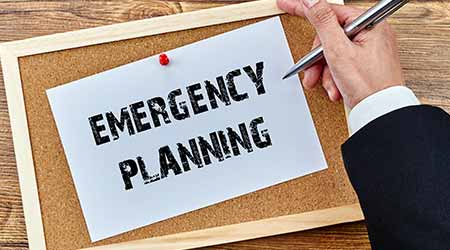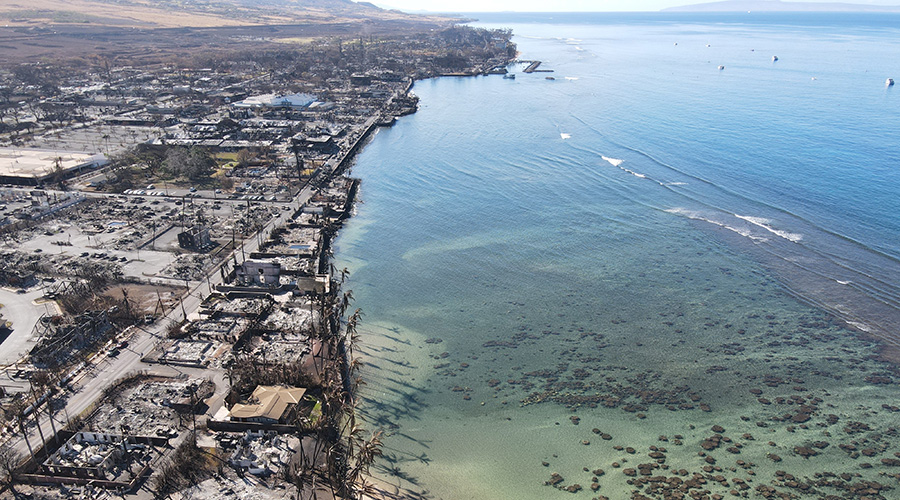How To Evaluate the Effectiveness of Emergency Preparedness Plans
Connecting emergency preparedness plans with disaster recovery is critical. The better the former, the quicker (and less costly) the latter.
There’s nothing like real-world experience to evaluate the effectiveness of emergency preparedness plans. On a trip to New York City in 2011, Sean Ahrens, security market group leader with Affiliated Engineers, Inc., was in meetings on an upper floor of a Manhattan high-rise when he says he suddenly felt nauseated. The reason? The building was literally swaying back and forth. Earthquake!
“Everyone was stunned,” he says. “A woman screamed, and people started making a beeline for the stairs.” Chaos ensued. A guy dropped his phone in the staircase and was almost trampled. Eventually, everyone made it safely to the street. But was evacuation the right move?
The problem, says Ahrens, was that there was no communication about what occupants should do. After all, who would expect an earthquake in New York City? Ahrens says when he finally made it outside, the street was clogged with other people from the building. He says he looked up and thought about what might’ve happened if hundreds of tons of steel and glass rained down on the people on the street.
The occupants should not have left the buildings, he says, but because there were no directions about what they should do, first impulse took over. Thankfully for the New Yorkers, the earthquake was centered hundreds of miles away in Virginia and so there was no major damage in New York City. Ahrens says when they were given the “all clear,” he sought out the security director for the building and asked him what went wrong. “He admitted they’d made a mistake,” Ahrens says. “He says they shouldn’t have evacuated.”
That lesson learned about emergency preparedness highlights not only the importance of communication during an emergency but also how facility managers should evaluate the effectiveness of their plans in general. The most basic measure of a plan’s effectiveness is how quickly it gets an organization back to normal operations in the case of a major emergency. This is what really gets attention, because how long a business is down translates into dollars and cents, and in extreme cases, whether a business can stay in business.
“People don’t like to think about it, but once you calculate the cost of being shut down, emergency preparedness takes on increasing importance,” says Dan O’Neill, founder and CEO of security consulting firm Advanced Data Risk Management. “Business continuity is about putting processes and systems in place to get back up and running as soon as possible.”
An emergency preparedness plan must be evaluated constantly, says Ahrens. It also must be flexible enough to respond to a variety of emergencies but also specific enough to be effective at directing occupants and keeping them and building assets as safe as possible. “Having a book detailing 72 plans for 72 different emergencies isn’t practical,” he says. “You have to create an ‘all hazards’ plan to adapt to as many emergencies as possible.”
One of the newer aspect of assessing risk and emergency planning is “velocity,” says O’Neill. “That means evaluating how quickly a potential event might unfold.” Armed assailant events are obviously different than weather events in how quickly they happen and much time, if any, there is to prepare. But even in the horrific case of an active shooter event, plans must be made for recovery. Ahrens says if the armed assailant is still alive, it’s likely a facility will become a crime scene after an incident, and could be possibly be shut down for weeks for investigation. What then? What plans are in place for business continuity if a particular facility is out of service? These are questions that must be asked when developing a plan.
But without an actual incident, how does one evaluate a plan? The most common method is the traditional table top exercises. “You have to put different people through the exercises at different times,” says Ahrens. “Then you have to throw in wild cards. Are there issues with power? Is the data center shut down?”
Ahrens says the most important aspect of any plan is training. “You have to take the assessments and policies and apply them to the individuals who will be involved in the emergency,” he says. “This includes the executives making critical decisions down to the individual employees.” The goal of any training and stress-testing the emergency plan is to make the mistakes “on paper.”
Related Topics:














